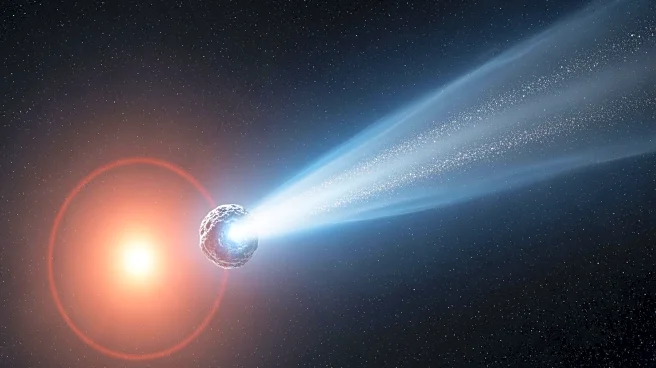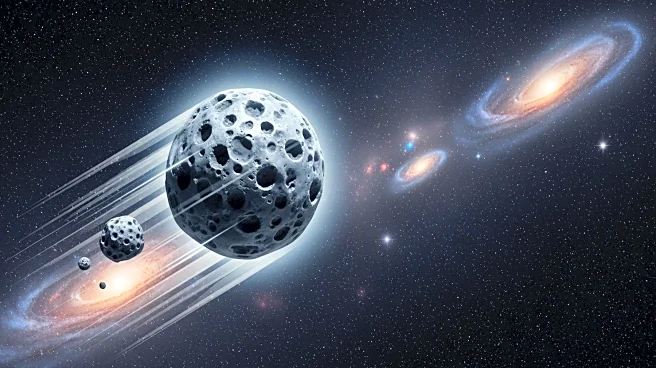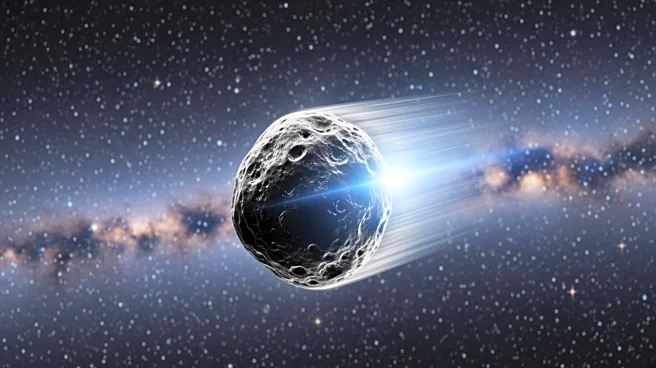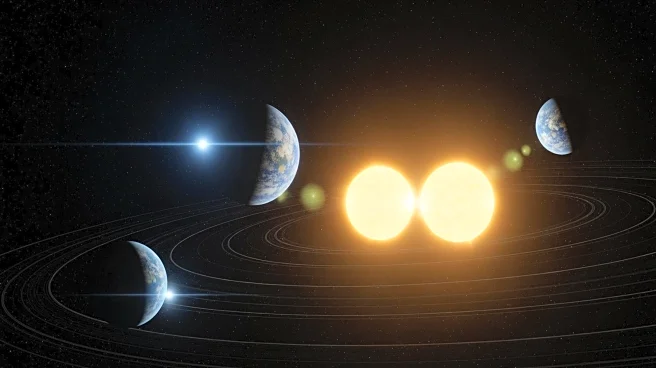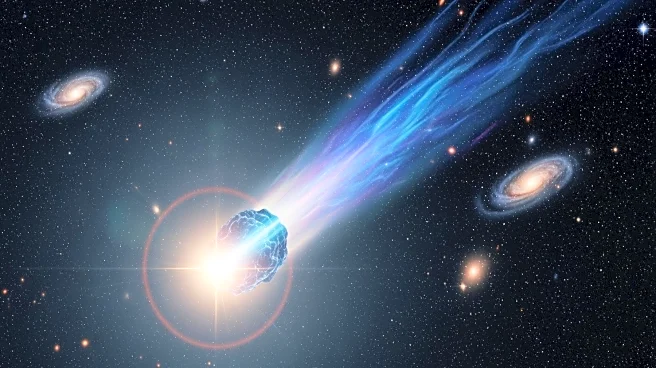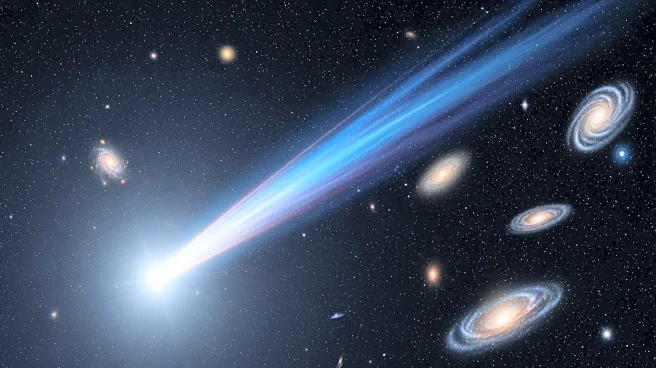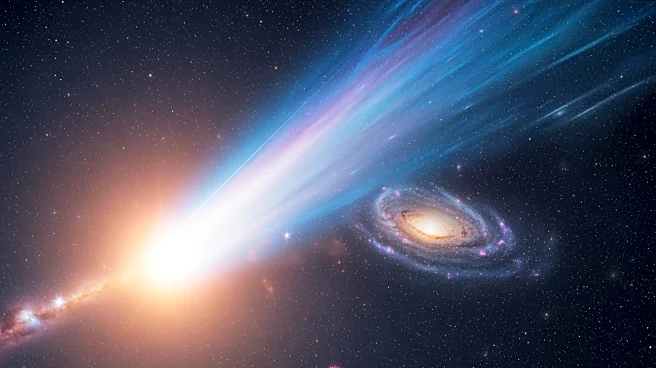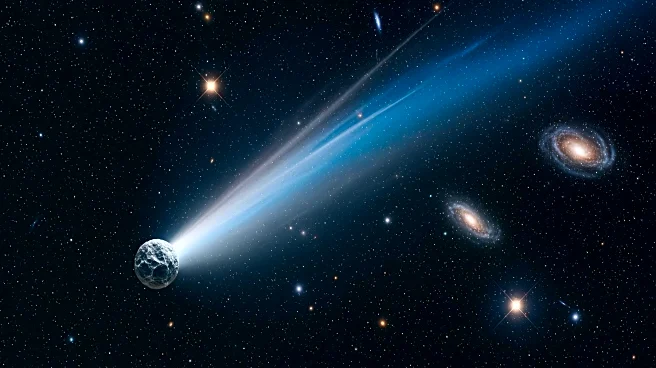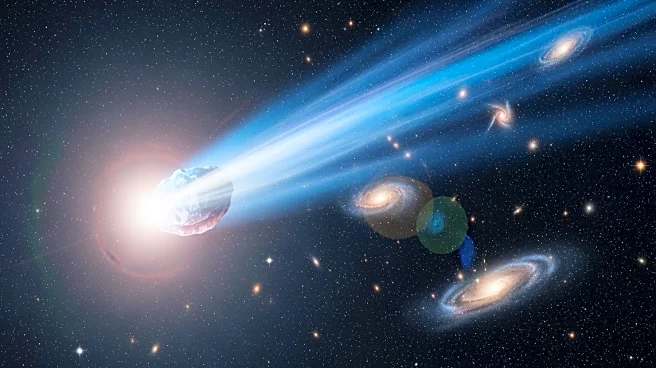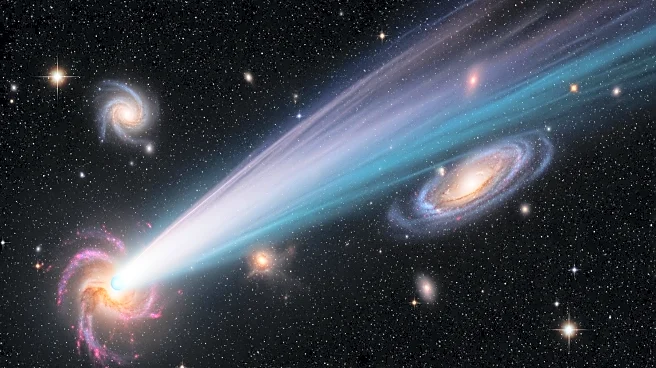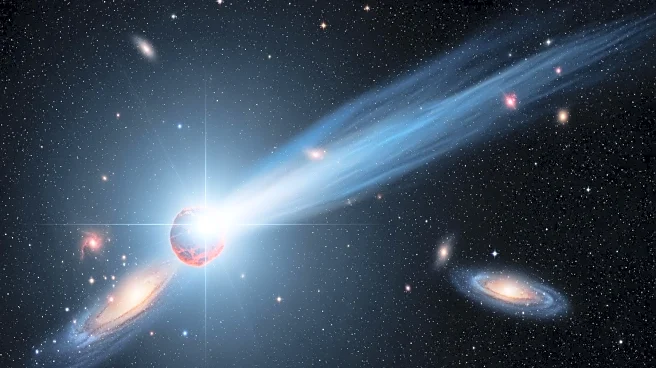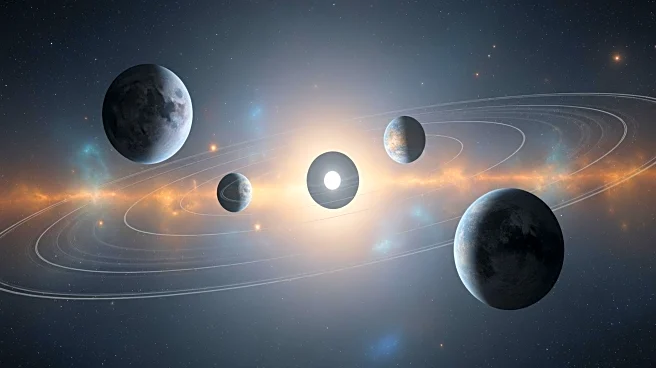What's Happening?
Comet 3I/ATLAS, an interstellar visitor, is releasing nickel vapor as it nears the Sun, reaching its closest point on October 29, 2025. This comet, discovered on July 1, 2025, by NASA's ATLAS telescope in Chile, is the third known comet from outside our
solar system. The comet is traveling at a speed of 137,000 mph and will approach within 130 million miles of the Sun. The release of nickel vapor, approximately 4 grams per second, is puzzling scientists as temperatures at such distances are typically too cold for metals to vaporize. The James Webb Space Telescope and NASA's SPHEREx mission have been observing the comet to gather more data.
Why It's Important?
The nickel vapor emission from 3I/ATLAS challenges existing scientific understanding of cometary chemistry, suggesting either unprecedented chemical processes or a unique composition. This discovery provides a rare opportunity to study an interstellar object, potentially revealing secrets about distant solar systems. The comet's behavior could offer insights into the conditions and processes in other star systems, contributing to our understanding of the universe. As only the third interstellar object observed in our solar system, 3I/ATLAS presents a unique chance for scientists to study materials from beyond our solar system.
What's Next?
As 3I/ATLAS reaches perihelion on October 29, 2025, scientists will continue to monitor its behavior and composition. The comet will pass behind the Sun relative to Earth in late October, making ground-based observations challenging. It will reappear in early December 2025, allowing for renewed observations. The comet's approach to Jupiter in March 2026 will provide further opportunities for study. Scientists are particularly interested in observing any changes in the comet's composition as it experiences increased thermal pressure.
Beyond the Headlines
The study of 3I/ATLAS could have broader implications for understanding the diversity of planetary systems and the potential for life beyond Earth. The comet's unique chemical signature may offer clues about the conditions in its parent star system and the processes that have shaped its journey through interstellar space. This research could inform future missions and the search for life in the universe.
